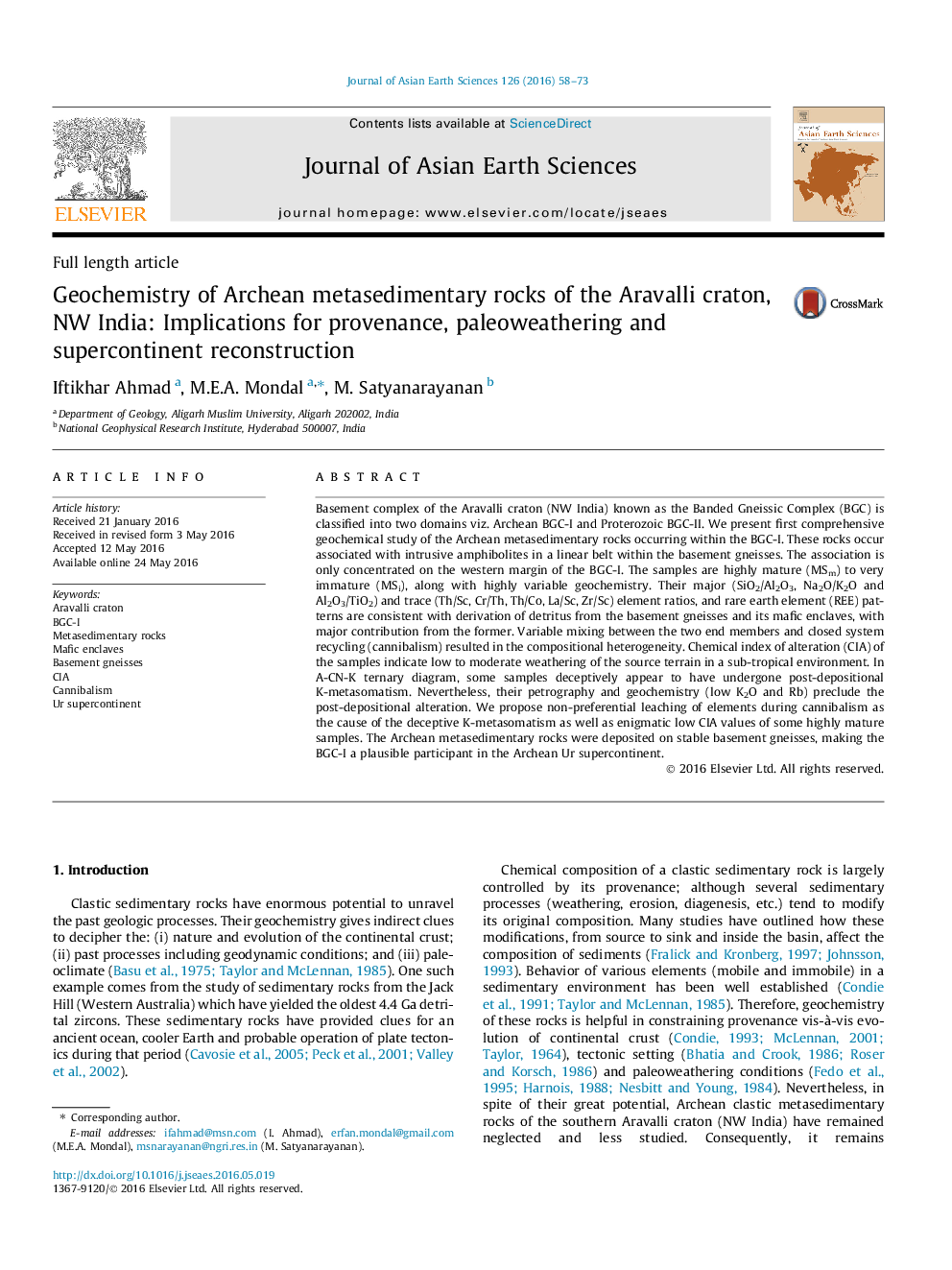| کد مقاله | کد نشریه | سال انتشار | مقاله انگلیسی | نسخه تمام متن |
|---|---|---|---|---|
| 4729968 | 1640345 | 2016 | 16 صفحه PDF | دانلود رایگان |

• Metasedimentary rocks occur associated with intrusive amphibolites in a linear belt.
• Volcano-sedimentary association confined to the western margin of the BGC-I.
• Cannibalism is inferred as cause of heterogeneity in geochemistry and low CIA.
• Inferred source rocks include the mafic enclaves and the host basement gneisses.
• Aravalli craton was part of the Ur supercontinent.
Basement complex of the Aravalli craton (NW India) known as the Banded Gneissic Complex (BGC) is classified into two domains viz. Archean BGC-I and Proterozoic BGC-II. We present first comprehensive geochemical study of the Archean metasedimentary rocks occurring within the BGC-I. These rocks occur associated with intrusive amphibolites in a linear belt within the basement gneisses. The association is only concentrated on the western margin of the BGC-I. The samples are highly mature (MSm) to very immature (MSi), along with highly variable geochemistry. Their major (SiO2/Al2O3, Na2O/K2O and Al2O3/TiO2) and trace (Th/Sc, Cr/Th, Th/Co, La/Sc, Zr/Sc) element ratios, and rare earth element (REE) patterns are consistent with derivation of detritus from the basement gneisses and its mafic enclaves, with major contribution from the former. Variable mixing between the two end members and closed system recycling (cannibalism) resulted in the compositional heterogeneity. Chemical index of alteration (CIA) of the samples indicate low to moderate weathering of the source terrain in a sub-tropical environment. In A-CN-K ternary diagram, some samples deceptively appear to have undergone post-depositional K-metasomatism. Nevertheless, their petrography and geochemistry (low K2O and Rb) preclude the post-depositional alteration. We propose non-preferential leaching of elements during cannibalism as the cause of the deceptive K-metasomatism as well as enigmatic low CIA values of some highly mature samples. The Archean metasedimentary rocks were deposited on stable basement gneisses, making the BGC-I a plausible participant in the Archean Ur supercontinent.
Journal: Journal of Asian Earth Sciences - Volume 126, 15 August 2016, Pages 58–73